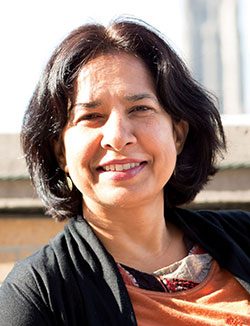
Sustained growth of 8 percentplus requires substantially greater investment in Indian youth and the education sector. Forty percent of the population is below 18 years and half below 24 years of age, writes Neeraj Kaushal
The Republic of India will turn 72 this year. In 1950 when newly independent India transformed into the first republic of the British Commonwealth of nations, the vast majority of free Indians were illiterate, malnourished and poor. Subsequent droughts of the mid-1960s gave India the image of a dependent nation that went around the world with a ‘begging bowl’ to feed its millions. Our goal was self-reliance, yet we could not survive without foreign aid. Former US senator and ambassador to India, Daniel Patrick Moynihan, scathingly wrote: “What does it (India) export but communicable disease?” Today it is painful to read this, but, that was the image of India in the early 1970s, a full quarter century after independence.
Progress on most economic and development measures remained slow for decades. Foreign investors avoided India, and a few that dared to start businesses here were soon packed off. Plunder and loot by the East India Company which ruled the country for eight decades, had made us psychologically intolerant of foreign companies on Indian soil. So under the leadership of prime ministers Pandit Nehru and then Indira Gandhi, we charted a course of development with a concoction of strategies including self-reliance and investment in public sector enterprises promoted to dominate the commanding heights of the Indian economy.
The following statistics recount the sobering outcome of these isolationist development strategies: It took four decades (1950-1990) to double India’s per capita income. The Republic crawled for decades before it could stand upright and walk on its own.
The next doubling of incomes happened faster — in 17 years, from 1990-2007, and even faster in 12 years from 2007-2019, as India progressively opened up its economy and removed shackles that constrained private enterprise. Three decades ago, India was a basket case economy. Now it’s the world’s sixth largest. From an economic laggard, India now stands tall among emerging economies.
Our aspirational goals are to grow from the current $2.9 trillion (Rs.218 lakh crore) into a $5 trillion economy by 2024-25 and a $10 trillion economy by 2030. But attaining these targets requires annual GDP growth rates of 15 percent. This is a dizzying target, difficult to attain in a single year and almost impossible to sustain for ten years. No other country has done this. In reality, we are likely to fall short of the 2025 target by at least $1 trillion.
Impossible though these targets may seem, they are indicative of the long way we have travelled and how we view ourselves in the world. In the first four decades of the Republic, our GDP growth target was 5 percent per year — a feat attained in only six of those 40 years, often enabled by low or negative growth in the previous year. Now, we worry when GDP growth falls below 5 percent per year.
The Covid-19 pandemic has exacted a devastating toll on lives and livelihoods. The pace of annual GDP growth which was declining before the pandemic, crashed by 7.3 percent in 2020-21. Opinions on how fast the economy can grow over the next five years are mixed. Some say the miracle growth rates of the early new millennium years are a distant dream. India has squeezed all it could from the economic reforms of the 1990s and early 2000s. GDP growth of more than 5 percent requires economic policy reforms for which there’s little political will or appetite.
Experts in finance, Reserve Bank of India and the International Monetary Fund project a more optimistic outlook. RBI has forecast GDP growth of 9.5 percent in 2021-22 and the IMF has accepted this projection. The IMF forecast for India’s GDP growth in 2022-23 is 8.5 percent. These impressive targets, if attained, would make India one of the world’s fastest growing economies.
However, sustained growth of 8 percent-plus requires substantially greater investment in Indian youth and the education sector. At 72, India is a remarkably young nation. Forty percent of the population is below 18 years and half below 24 years of age. But most of our youth entering the workforce are unskilled. Employers complain that even college graduates lack employability skills.
The sad reality is that even the best-ranked higher education institutions of India suffer chronic faculty shortages, accentuated by the Covid pandemic. A third of the faculty positions in Central universities and 43 percent of faculty positions in the country’s renowned IITs are vacant, aggregating to over 10,000 in Central universities, IITs and IIMs.
Skills scarcity is a global phenomenon as is competition to attract qualified faculty. The only option to stay in this race is to educate India’s young population and ideate policies and structures to attract talent and skilled professionals from around the world just as the United States, several European countries, Canada and Australia have done. China has joined this race, India should too. And quickly.
(Dr. Neeraj Kaushal is chair, doctoral program, School of Social Work, Columbia University, USA)
Also Read: Neeraj Kaushal: Low-price low-quality equilibrium
